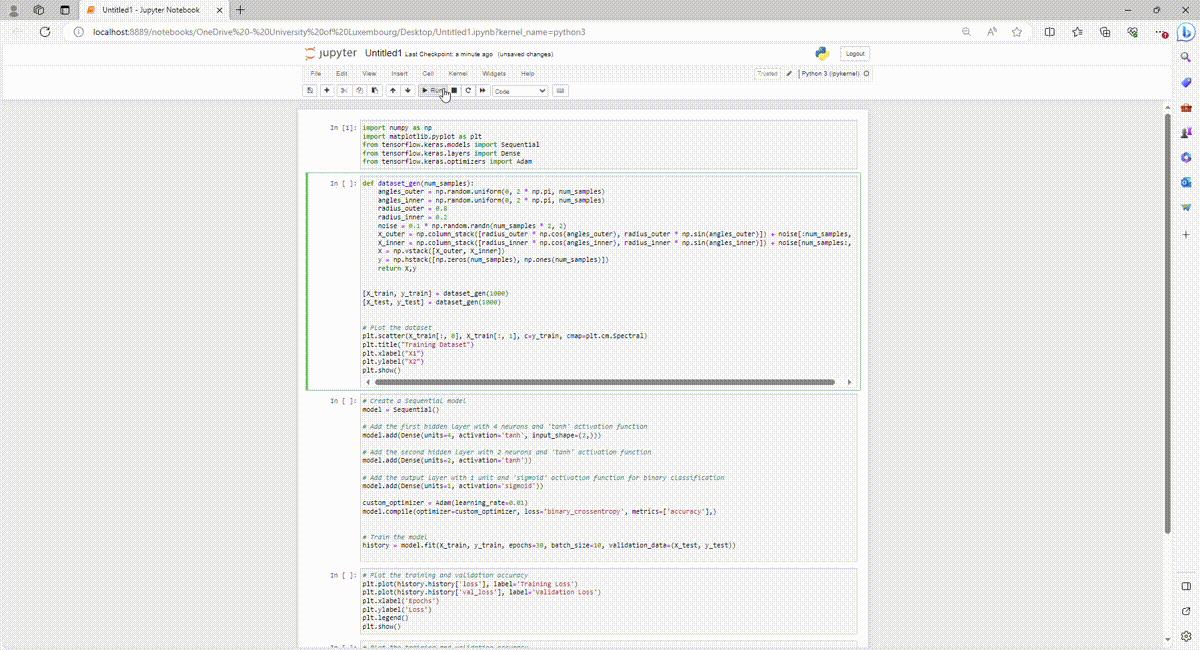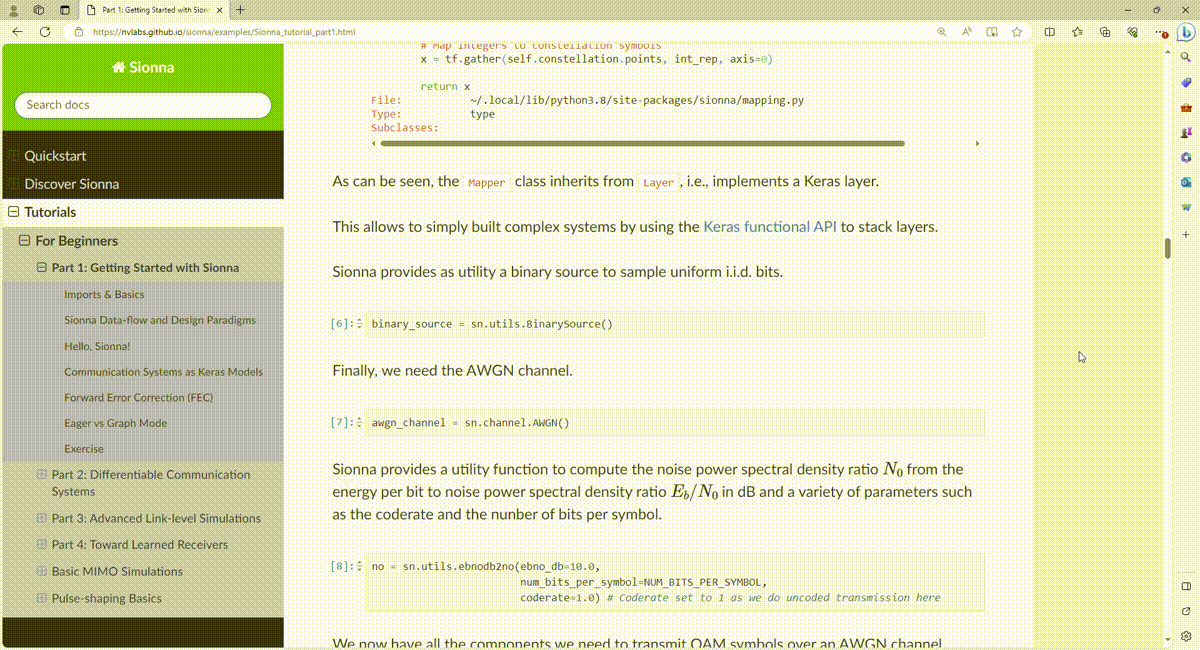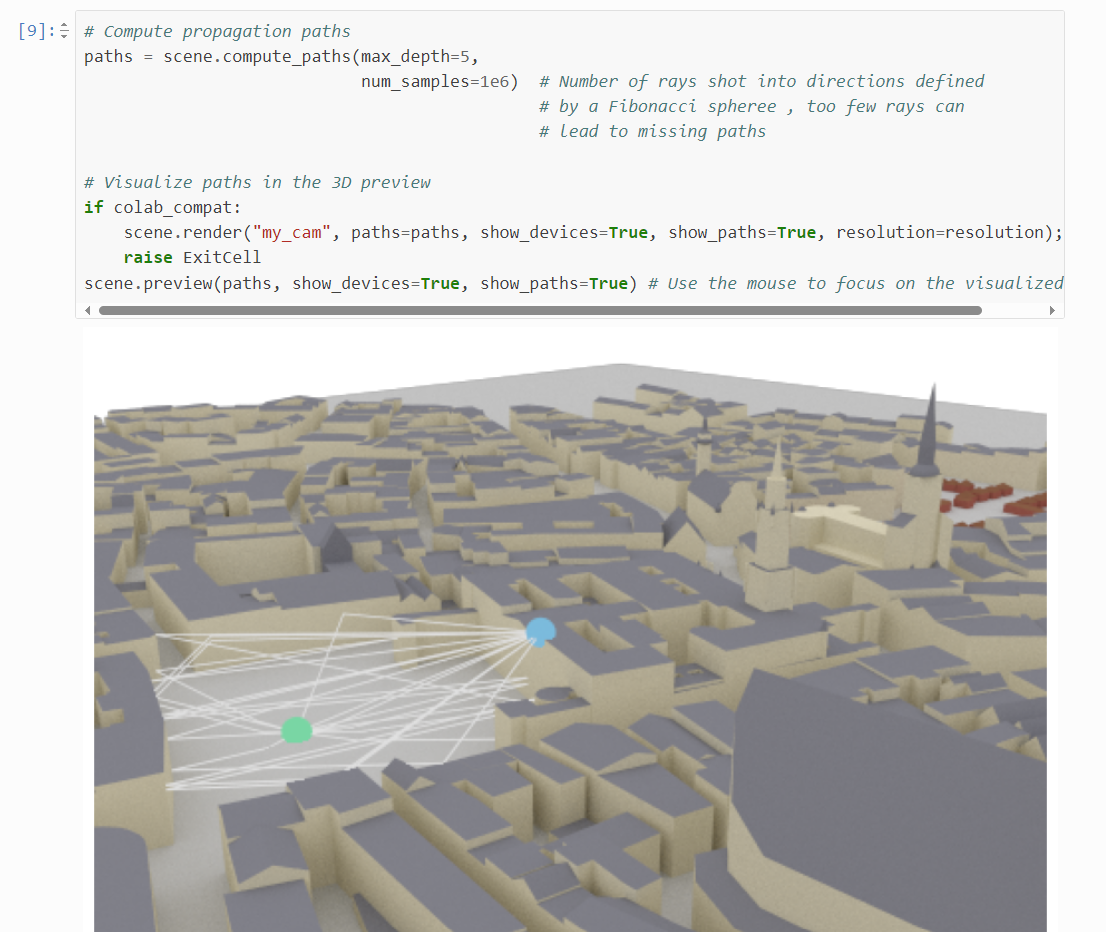¶ ML Tools

¶ Tensorflow

TensorFlow is an open-source machine learning framework designed to simplify the process of building, training, and deploying machine learning models.
The TensorFlow Playground provides an interactive environment to experiment with neural network configurations and hyperparameters, allowing users to observe how changes impact the model's ability to learn and classify complex patterns in the data.

In the classification example above, the goal is to train a neural network to classify points in a two-dimensional space into two distinct classes.
The neural network architecture includes two hidden layers: the first with four neurons and the second with two neurons. These layers contribute to the model's ability to learn complex patterns in the data. The output layer, with a single neuron and a sigmoid activation function, is suitable for binary classification.
Throughout the training, the model learns to distinguish between the two classes in the circular dataset. Users can observe the evolving decision boundaries and gain insights into how different neural network configurations and hyperparameters impact the model's performance in a classification task.
¶ Keras
Keras is an open-source deep learning library that acts as an interface for TensorFlow (as well as other backend engines). Keras was designed with user-friendliness and modularity in mind, making it the perfect choice for rapid prototyping and experimentation with neural networks.
For instance, Jupyter Notebooks can be used to work with keras. In the example below, we build a keras model to solve the same classification problem illustrated in the Tensorflow Playground.
# Create a Sequential model
model = Sequential()
# Add the first hidden layer with 4 neurons and 'tanh' activation function
model.add(Dense(units=4, activation='tanh', input_shape=(2,)))
# Add the second hidden layer with 2 neurons and 'tanh' activation function
model.add(Dense(units=2, activation='tanh'))
# Add the output layer with 1 unit and 'sigmoid' activation function
# for binary classification
model.add(Dense(units=1, activation='sigmoid'))
custom_optimizer = Adam(learning_rate=0.01)
model.compile(optimizer=custom_optimizer, loss='binary_crossentropy',
metrics=['accuracy'],)
# Train the model
history = model.fit(X_train, y_train, epochs=30, batch_size=10,
validation_data=(X_test, y_test))

¶ Sionna

Sionna™ is a GPU-accelerated open-source library for link-level simulations. It enables rapid prototyping of complex communication system architectures and provides native support for the integration of machine learning in 6G signal processing.
With Sionna is simple to perform tasks like creating QPSK symbols and adding AWGN channel, as shown below.

Sionna can also be used for more advanced tasks like ray tracing.
